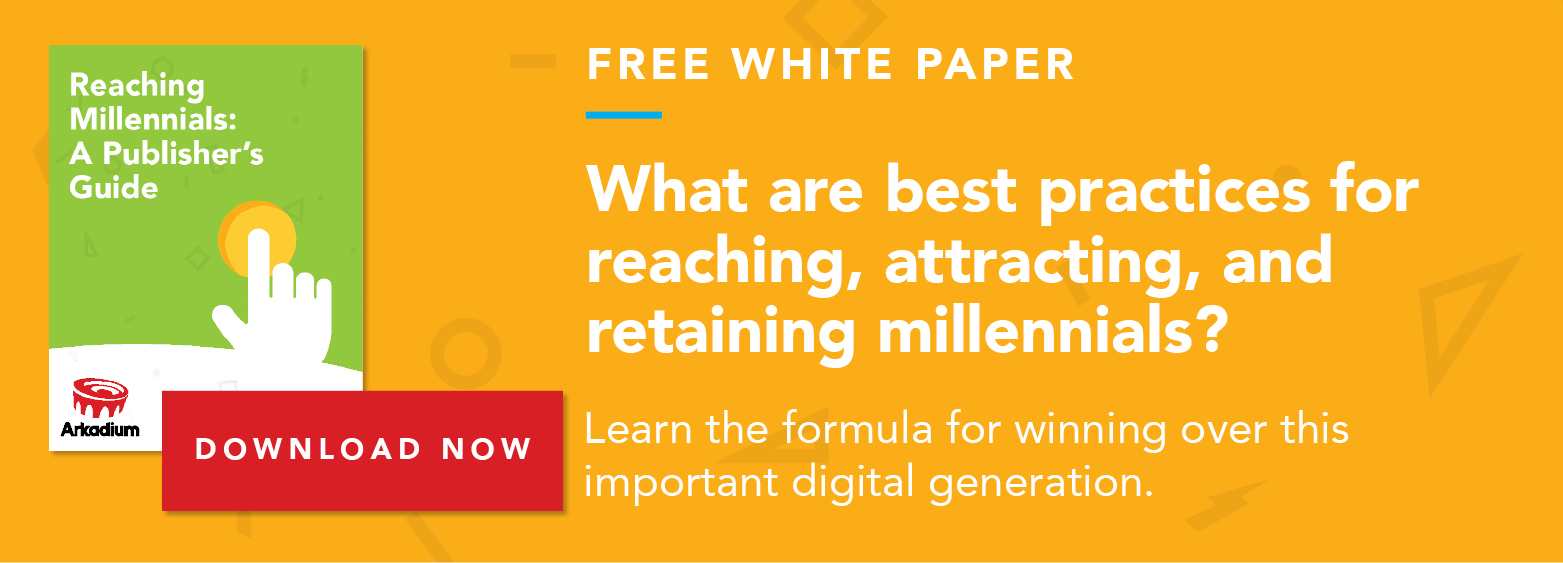How Publishers are Successfully Using Branded Content

Media companies are getting creative when it comes to monetization.
For example, branded content is a form of advertising where brands can promote themselves through content that is produced via a digital publisher through the respective brand’s funding.
And this content form clearly makes sense; according to a study conducted by the Townsend Group — a leading advertising, sponsorship and trade show sales management firm — 70 percent of individuals want to learn about a product through content, rather than via conventional digital ads.1
Publishers are certainly taking note.
Mic, a news outlet geared toward millennial readers, understands that its audience is disinterested in viewing standard digital ads, and has completely strayed away from the banner ad since its launch in 2011.2
Instead, the millennial targeted publisher has focused on branded content.
So far, brands like Cadillac, Microsoft and GE have all paid the publisher an undisclosed fee in exchange for engaging content with their respective logo and brand message worked in.
“We’re going to build ads that are as compelling or more compelling than regular editorial content,” CEO Chris Altchek said. “It’s one thing to push 500-word stories; it’s another to try to engage audience with interactivity.”3
Mic is not alone in its pursuit to monetize in a way that engages users. Many digital publishers are working directly with brands to create content that can exist as various mediums.
For example, Hearst Magazines Digital Media publishes branded content that closely resembles the various types of content they already produce.
“We typically publish articles, videos, galleries, slideshows, listicles, you name it,” said Todd Haskell, SVP and CRO at Hearst Magazines Digital Media. “Our branded content offering is using those exact same techniques. So we might work with a client and help identify a variety of editorial experiences that we could create, into which we can integrate that brand’s message or even the product they’re selling.”4
As a result of being inherently more compelling than standard text-editorial, branded content that utilizes interactive mediums like video, photo galleries, and infographics are more likely to increase user-interest — leading to more time spent on a site.
In 2015, The Atlantic’s users spent about seven minutes on its two highest-performing pieces of branded content: Qualcomm’s “The Space Within” and Boeing’s “A Century in the Sky.”5
Both pieces included a full suite of text and interactive content that encouraged the user to click through to view more content. These pieces also performed better than other text-based editorial, where the average time spent on an article was closer to four or five minutes.6
Additionally, The Atlantic reported last year that 75 percent of its revenue was estimated to come from branded content – up from 60 percent in 2015.7
Loren Elia, Product Marketing Manager at Weebly explains, “for media and newsrooms, it’s obvious: The longer a person stays on a site, the more valuable they are for the advertisers … more engagement means more eyeballs and more eyeballs means more opportunities to generate ad revenue.”8
Indeed, branded content achieves two things at once: It offers users interesting content which increases time on site and ad revenue, while simultaneously opening a new stream of revenue for digital publishers with the branded content itself.
1. “15 Mind-Blowing Stats About Sponsored Content.” The Townsend Group. N.p., 29 June 2016. Web. 27 Feb. 2017.
2. Bilton Ricardo. “Inside Mic’s millennial native ads pitch to brands.” Digiday. N.p., 25 Nov. 2014. Web. 27 Feb. 2017.
3. IBID
4. Abramovich, Giselle. “Publishing’s Response To The ‘Age Of Experiences'” CMO. N.p., n.d. Web. 27 Feb. 2017.
5. Chen Yuyu, “How sponsored content drives more than 60 percent of The Atlantic’s ad revenue.” Digiday. N.p., 28 Mar. 2016. Web. 27 Feb. 2017.
6. IBID
7. IBID
8. Elia, Loren. “Study: How The Use of Data Visualization Impacts Content Engagement.” Linkedin.com. N.p., 30 Nov. 2015. Web. 27 Feb. 2017.


